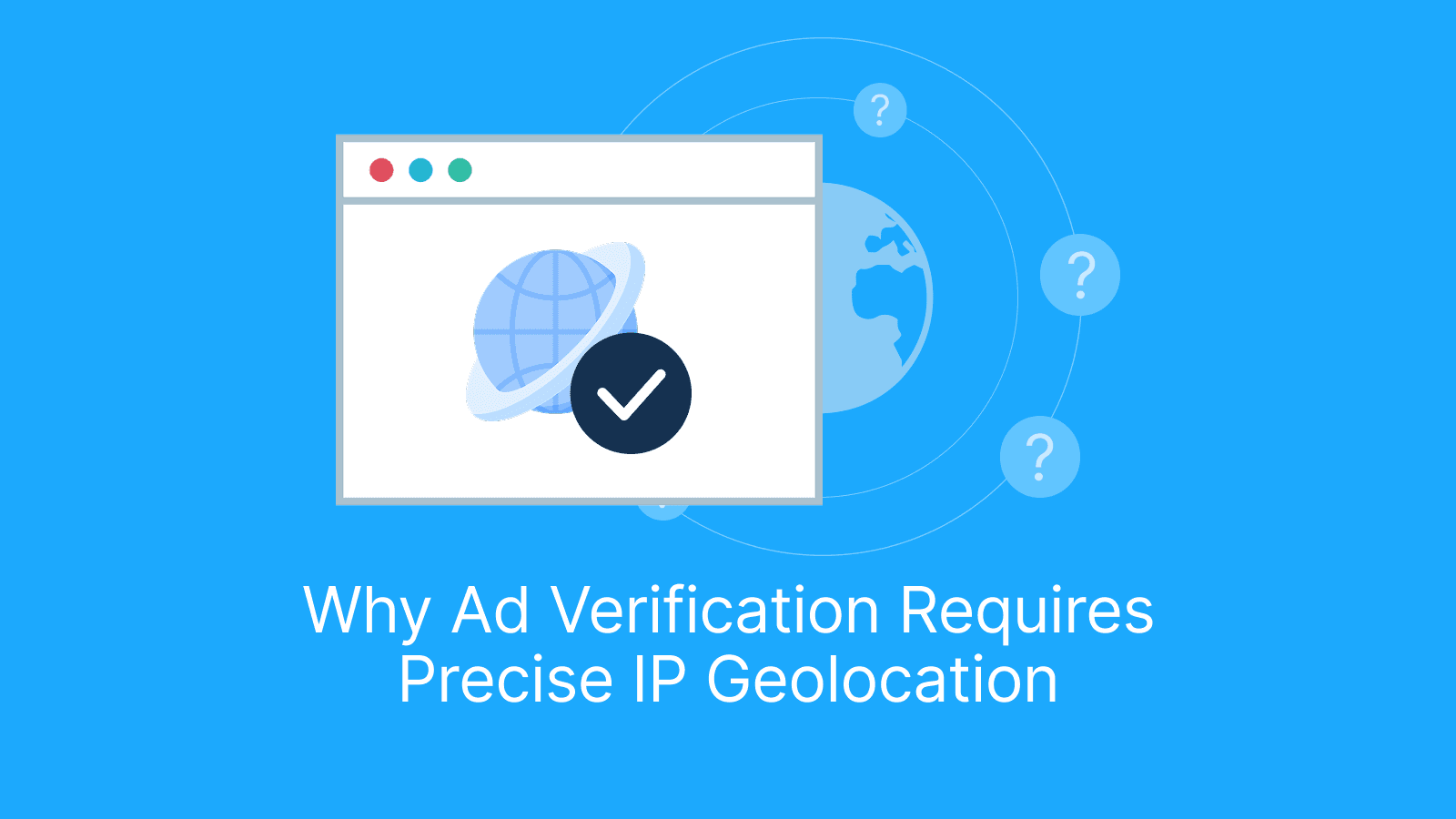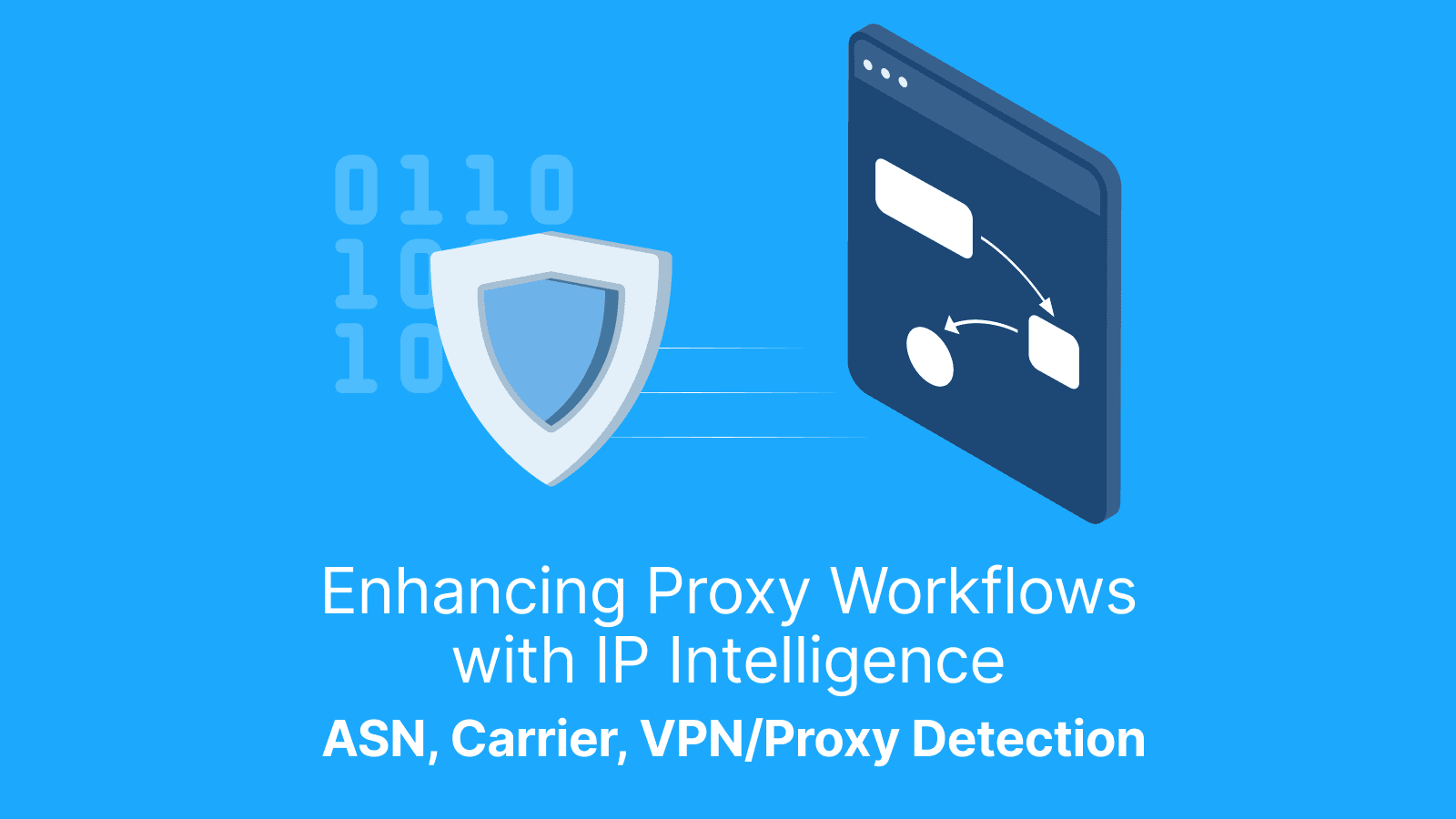Ad fraud is a huge and growing problem in digital marketing. Accurate IP geolocation matters for ad verification because it provides the critical data needed to ensure ads are reaching real people in the right locations, not bots or masked traffic. In fact, industry research finds that roughly 22% of all online ad spending, which is about $84 billion, was lost to ad fraud in 2023, and this could soar to $172 billion by 2028. By using geolocation data to verify each ad impression, advertisers can spot fraudulent traffic, fake engagements, and protect their budgets from wasted spending.
Ad verification means checking that your ad placement actually appears where and how you intend. In practice, this means confirming ads are served to real human users in the targeted geography and context. Without strong verification, fraudsters can use bots, click farms, or spoofed IPs to simulate clicks and impressions. As one ad fraud prevention expert notes, “fraud traffic includes clicks and impressions from bots, fake users… These interactions waste your budget and manipulate your campaign data.” The upshot: if you don’t verify where your ads are seen, you risk paying for thousands of worthless impressions.
Key Points:
- Ad fraud is a multi-billion-dollar drain on budgets projected to reach $172B by 2028.
- Proxies let advertisers mimic users in any location, but their IP locations must be verified.
- Accurate IP geolocation data (city, ISP, proxy/VPN status) flags suspicious traffic.
- Together, high-quality residential proxies and a reliable IP Geolocation API form a strong defense against ad fraud.
The Billion-Dollar Problem of Ad Fraud
Ad fraud includes fraudulent practices like fake clicks, bot traffic, and “impression laundering” that pretends ads were seen by real people. These hidden ads severely cut into marketing ROI. Industry analyses, including studies by Statista and Juniper Research, estimate that global ad fraud losses exceeded $80 billion in 2023 and could approach $170 billion by 2028. In other words, without ad verification, billions of ad dollars vanish every year into fake or invalid traffic.
Ad verification is a measure of resistance: it utilizes technology and manual checks to confirm that each ad impression actually reaches a human in the intended location. For example, if you’re targeting customers in Los Angeles, ad verification ensures the ads are really served to L.A.-area users, not to a click farm overseas.
Without this check, you might pay for ads that never stood a chance of conversion. As an industry blog notes, “By geo-targeting accurately, ad verification tools ensure ads reach genuine users in the intended locations.” In short, ad verification and geolocation work together to make sure your wasted ad spend isn’t being funneled to robots or unwanted audiences.
The Role of Proxies in Ad Verification

Advertisers commonly use proxies to perform ad verification tests. A proxy server gives you an IP address in a specific city or country, so you can browse the web as if you were located there. This lets you manually or automatically check what users in each target location actually see. For example, to validate a geo-targeted campaign, you might use a proxy in New York to confirm that a “NY-only” ad appears properly or in Miami for a Florida campaign.
Proxies enable several key verification tasks:
- Geo-Targeting Validation: Using a proxy in the target city lets you confirm that region-specific ads are really showing up there. For instance, a campaign aimed at Chicago can be tested via a Chicago IP lookup to ensure the ad appears for Chicago users.
- Competitor Ad Monitoring: You can discreetly view competitors’ ads as if you were in another market. By using proxies in different regions, you can “spy” on competitor campaigns—seeing their creative and placement details in various geographies.
- Ad Quality Control: Proxies allow testing across devices and networks. You can switch between mobile and desktop proxies in different cities to make sure your ads look correct (proper formatting, language, links, etc.) everywhere.
These methods let advertisers simulate real user conditions and spot differences. For example, if a publisher claims high impressions in a certain country, you can verify by accessing the site through a local proxy. As one guide explains, accessing a campaign through a proxy “allows advertisers to see exactly what an average user sees” and catch anomalies. That said, proxies aren’t foolproof on their own. A proxy changes your IP, but it doesn’t guarantee the IP’s location is authentic without verification. In practice, reputable proxy providers continuously verify that each IP’s declared location matches its actual region through automated geolocation checks. You can use an IP lookup service to immediately verify that the proxy's reported location is authentic. In e-commerce, for example, merchants verify that an order’s IP location matches the billing address; if it doesn’t, it’s a “sign of credit card fraud.”
In summary, proxies are essential tools for placing checks in different regions, but they must be paired with location data to be trustworthy.
The Critical Link: Accurate IP Geolocation Information

This is where IP geolocation becomes essential. A good service doesn’t just show the IP address; it reveals the country, city, ISP, connection type (rotating residential, rotating mobile, or data center proxies), and the autonomous system number (ASN) or connection metadata. It also flags whether the IP address is linked to a proxy, VPN, or TOR node, and most ad verification systems exclude data center IPs to ensure impressions come from genuine residential or mobile networks.
With this data, you can spot fraud quickly. For example, if traffic claims to be from Los Angeles but the geolocation shows another country, that’s a red flag. Geolocation also detects inconsistent IP shifts between distant regions, which can signal spoofed or automated traffic patterns. Modern APIs even identify cloud-hosted IPs, which are unlikely to represent real consumers.
Beyond fraud detection, geolocation ensures compliance and brand safety. Different regions restrict certain ads (like gambling or pharmaceuticals), and accurate IP data helps keep your campaigns within legal and brand-safe boundaries to protect your brand reputation. As IPGeolocation.io notes, ad verification depends on detecting proxies and ensuring ads are seen by real users in valid locations. In short, geolocation turns raw IPs into actionable intelligence so you can block risky traffic and focus on genuine impressions.
How the Two Technologies Work Together
Proxies + geolocation = stronger ad verification. Think of it as a one-two punch. First, use a proxy to appear as a local user in your target region. Then use geolocation data to double-check that this “local” IP is legitimate and not an anonymized server. Together, they give you both reach and verification.
Actionable steps for ad pros:
- Use high-quality residential proxies. Choose proxies that provide real ISP-assigned IPs from many locations worldwide. For example, “our residential proxies will let you get IPs from nearly any location in the world,” making geo-fraud schemes much harder. High-quality residential proxies make your tests indistinguishable from actual users.
- Integrate a reliable IP Geolocation API. Plug in a trusted geolocation service (such as IP Geolocation API) to every proxy IP address you use. This instantly tells you the IP’s true city, region, connection type (mobile, DSL, etc.), and any threat flags (proxy, VPN, or TOR). For instance, if a proxy IP address should be in New York but the API shows it in a different country, you’ll catch the inconsistency immediately. Likewise, if the IP address is flagged as an anonymous proxy or data center, you can treat it as suspicious.
- Run continuous geo-verification tests. Don’t just check once; make ad verification an ongoing part of your campaigns. Routinely run your ads through proxies in each target region and use the geolocation API to log the results. Compare this data against what your ad platforms report. If you see click or impression spikes coming from unexpected locations or IP types, investigate and filter them. Automated alerts can be set up for anomalies. This continuous monitoring ensures that fraud attempts (like sudden bot attacks) are caught quickly.
- Focus on suspicious patterns. Watch for red flags in the geolocation data. For example, a sudden surge of clicks from a country outside your targets or many clicks from known VPN exit nodes. A good geolocation service will highlight these issues. By cross-referencing proxy traffic with geolocation, you actively “bug-sniff” your fraud campaign.
By combining residential proxies with an IP Geolocation API, you gain two advantages at once. The proxy lets you physically reach any location, and the geolocation data verifies that reach. This synergy maximizes ROI: it helps you catch sophisticated fraud (like cloaking and traffic laundering) without blocking legitimate users. As one industry guide puts it, this combination “offers a unique combination of authenticity, stability, and precision” in the fight against digital advertising fraud.
Further reading: What Is an Open Proxy? Risks, Examples and Alternatives and What Are Proxies for Bots? Roles and How to Choose Proxies for Different Bot Tasks.
Conclusion: Protecting Your Ad Campaign Spend
In today’s high-stakes ad world, every impression and click matters. Ad fraud can silently drain your budget, but you can fight back by using the right tools. The bottom line is this: proxies and geolocation are essential partners for modern advertisers. Proxies give you the geographic presence to verify placements, while accurate IP geolocation gives you the intelligence to trust those placements. When you use a high-quality residential proxy network together with a reliable IP Geolocation API, you create a one-two punch that uncovers bots, rogue proxies, and compliance issues before they hurt your campaigns.
By layering these technologies, you ensure your ads are seen by real users in the right places. This protects your brand, meets regional advertising rules, and most importantly, protects your budget. In the battle against ad fraud, don’t leave your advertising dollars undefended. Accurate IP geolocation for ad verification solutions is the key to making sure your marketing spend goes to genuine engagement, not to fraudsters’ pockets.




